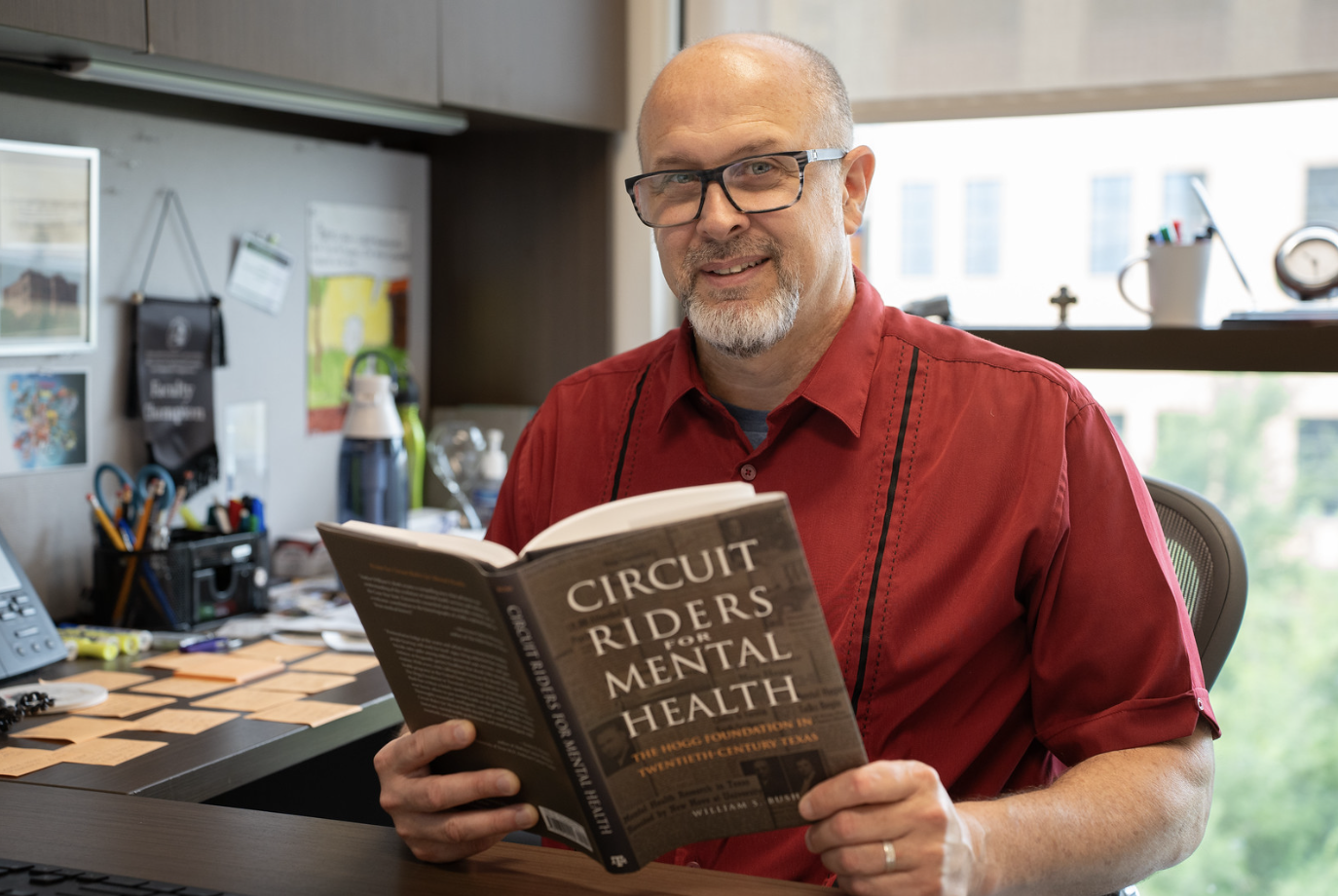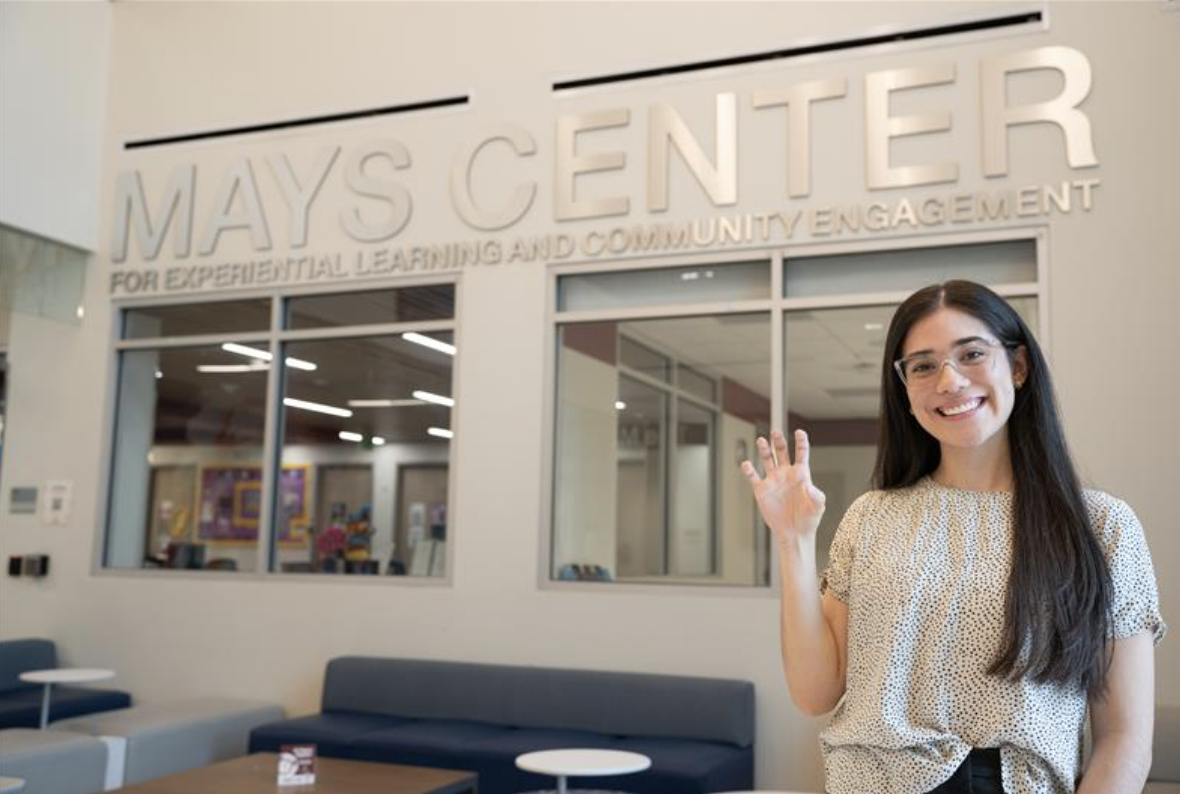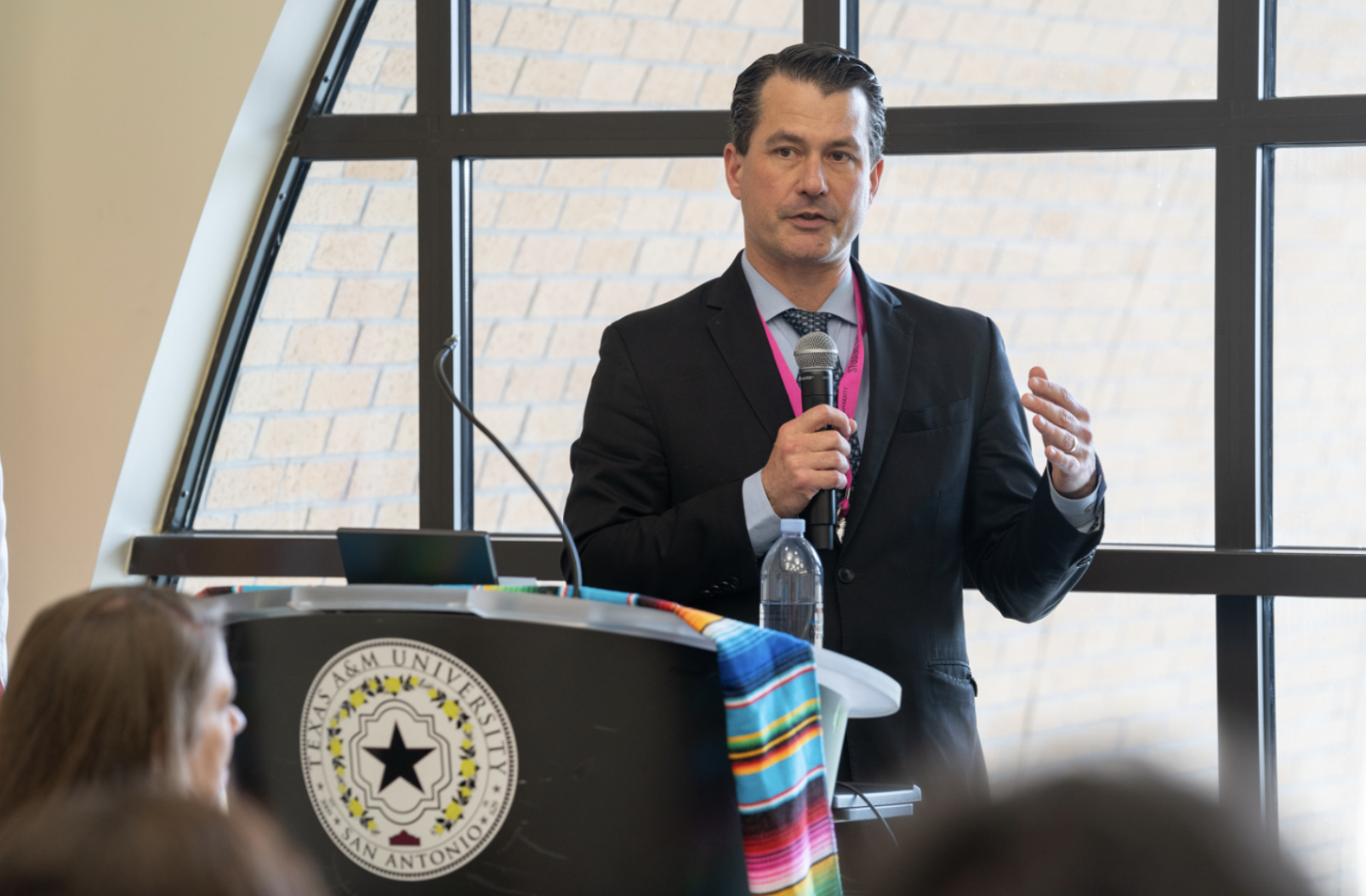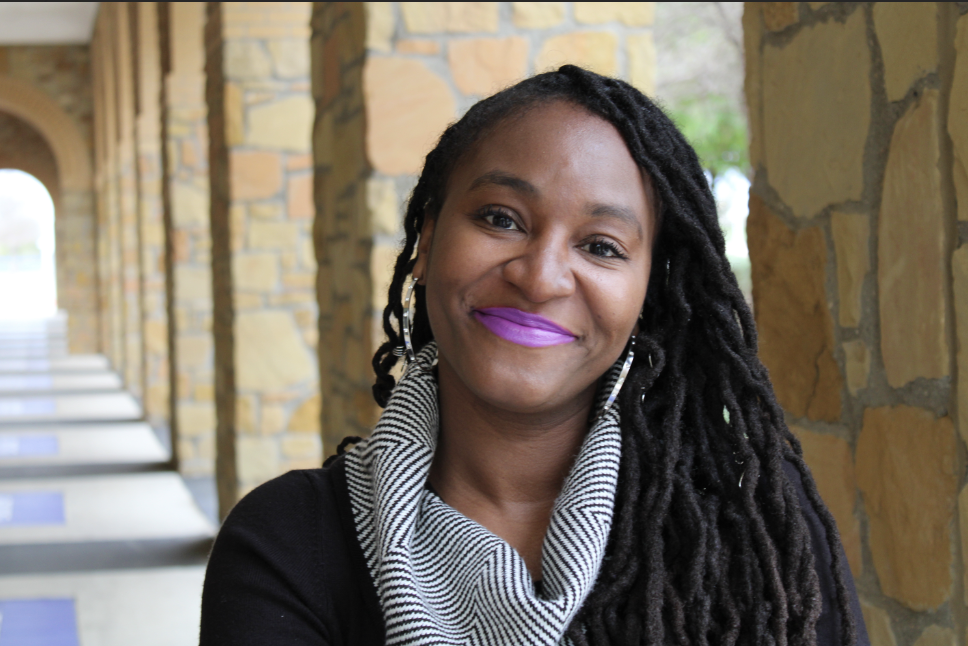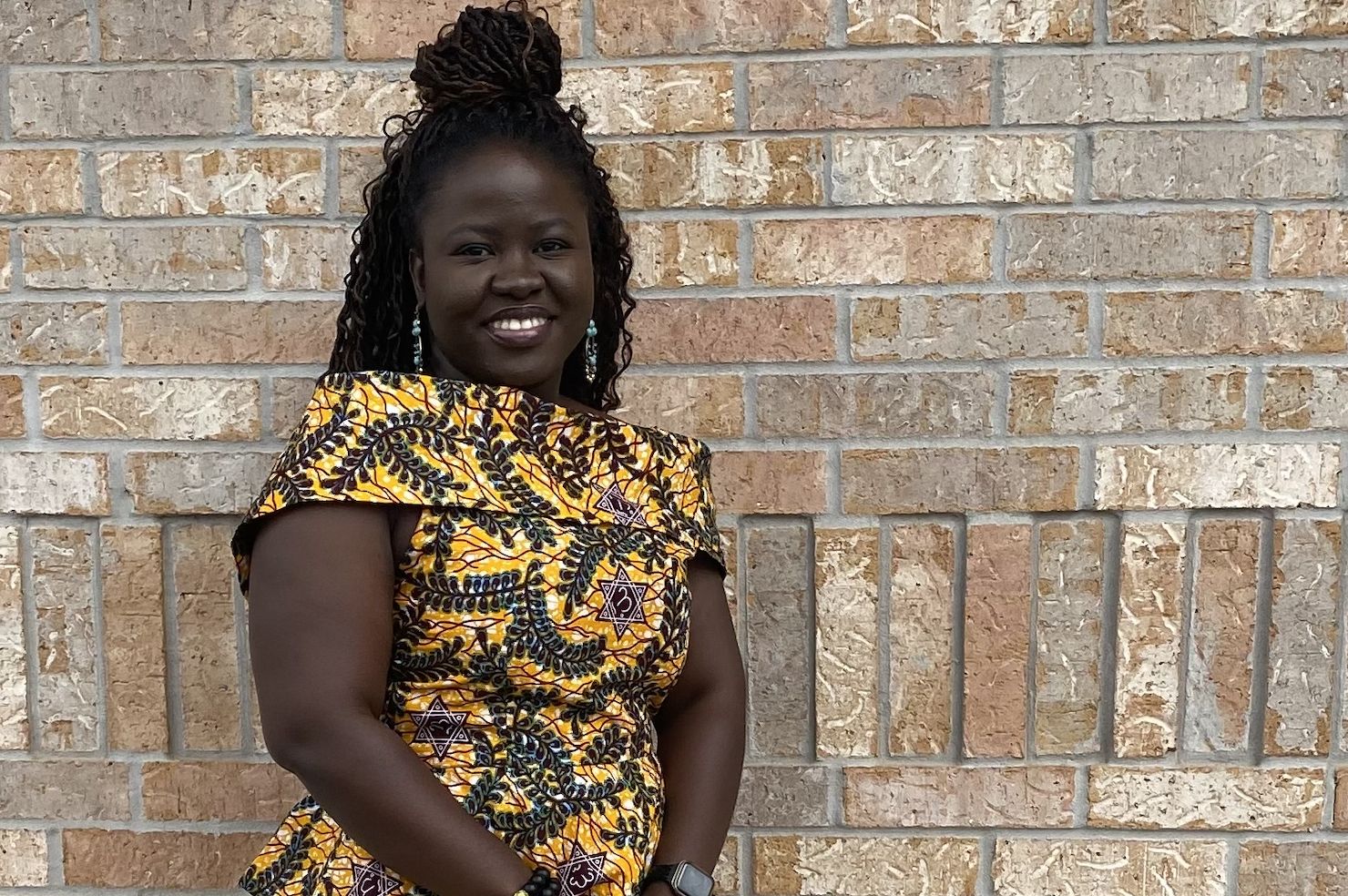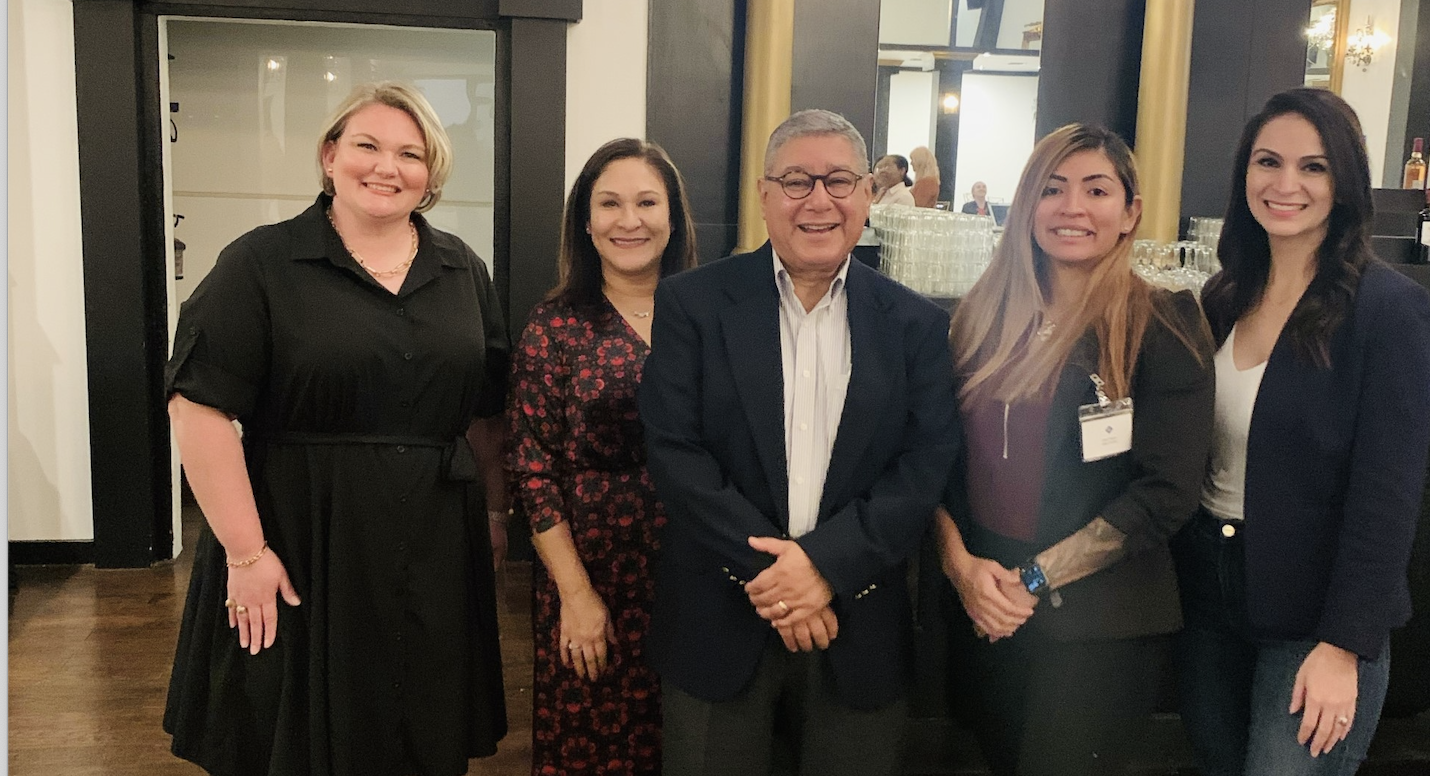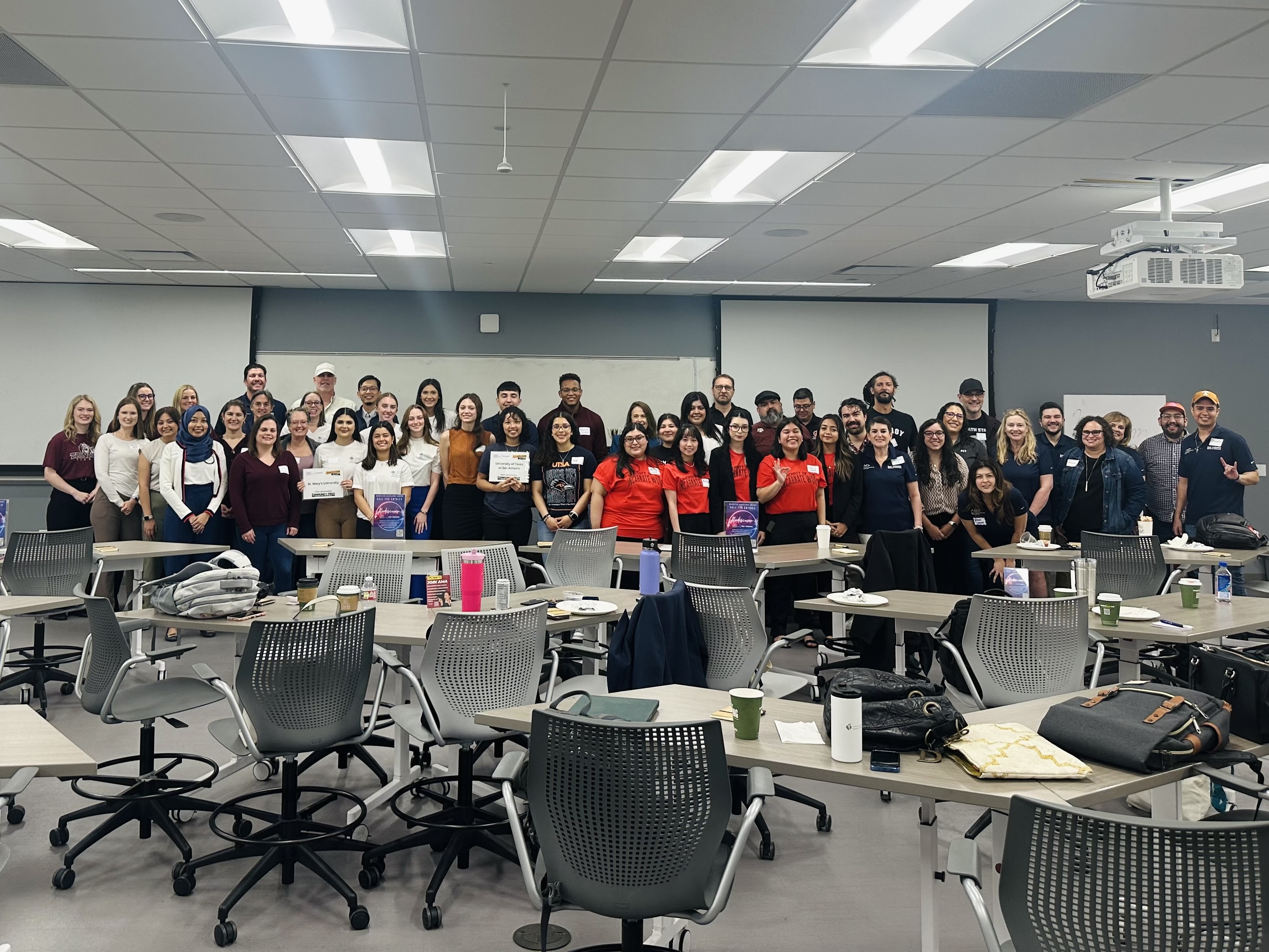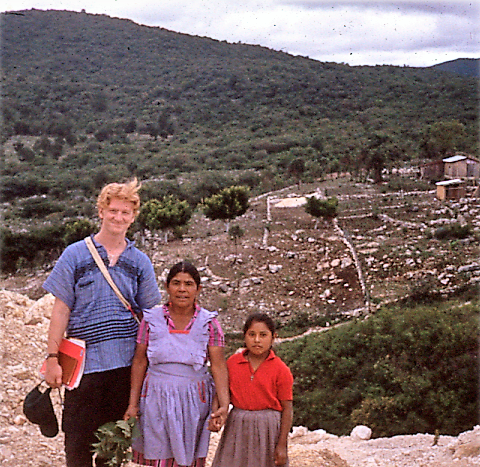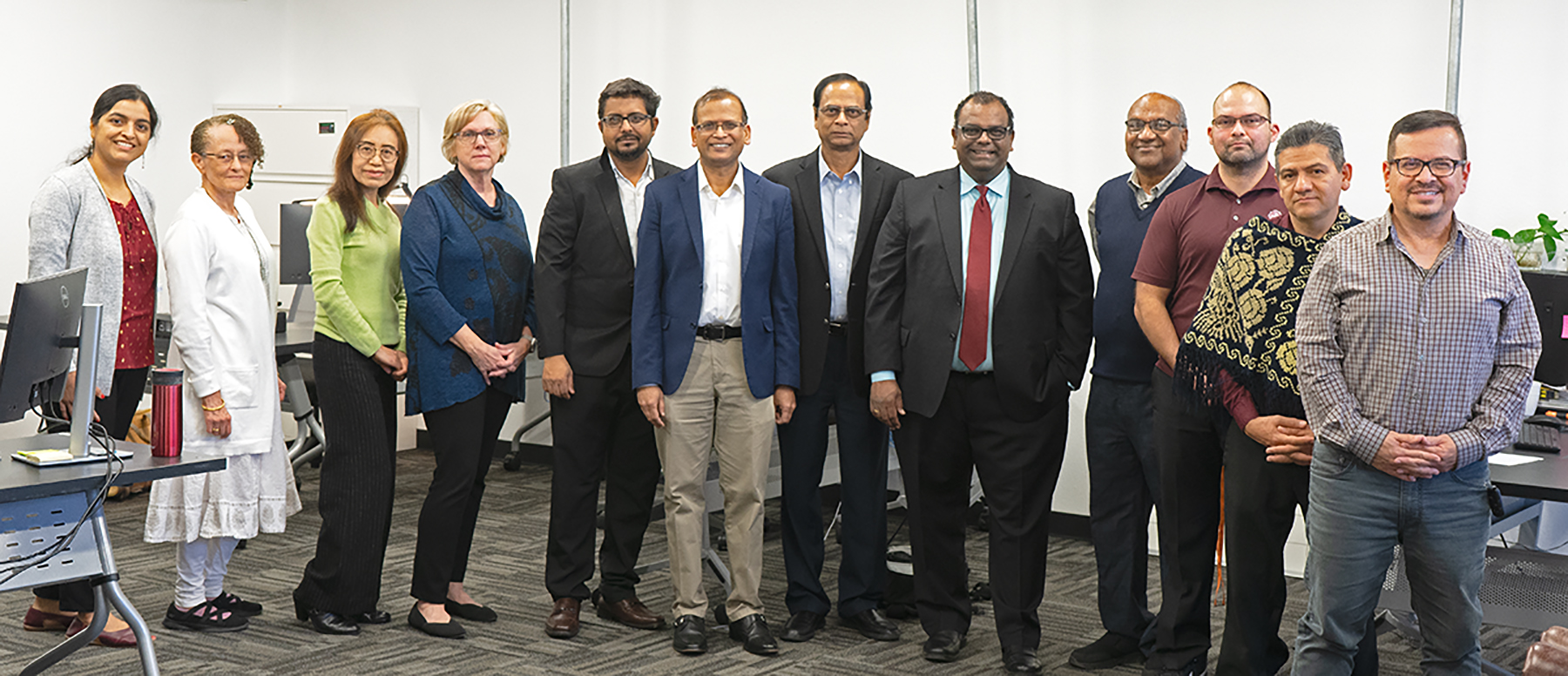A $25,000 grant awarded by AT&T to Texas A&M University-San Antonio in support of its La Familia project will help local family members enhance student learning and success.
During Texas A&M University-San Antonio’s Fall 2021 Convocation, August 17, University Foundation Board Member J.D. Salinas, assistant vice president of AT&T External and Legislative Affairs, presented a $25,000 check to A&M-San Antonio President Dr. Cynthia Teniente-Matson in support of the University’s La Familia program.
The La Familia project, which focuses on educational equity, is an innovative part of A&M-San Antonio’s overall goal to support the seven school districts surrounding its campus that comprise the ASPIRE network (A&M-San Antonio and South Bexar County ISDs Partnership to Impact Regional Equity and Excellence).
The overall aim of La Familia is to enhance early intervention efforts by boosting digital fluency and student academic enrichment in math and writing in particular. The specific purpose of the AT&T grant is to support the digital literacy component of the La Familia program by helping address educational barriers such as connectivity and technology access. This grant will provide all participating families with:
- On-site access to the internet during training sessions with digital literacy support to ensure parents learn to navigate digital resources and hone their ability to understand and navigate electronic information.
- Personal laptops to aid with internet and information accessibility to ensure family members have the proper equipment to get the most out of their digital experience.
- Training workshops to familiarize families with school learning portals so they can better access school resources and actively support the e-learning needs of their children.
San Antonio City Councilwoman (District 3) Phyllis Viagran was also on hand during the Fall 2021 Convocation to express her thanks. “All students need access to reliable internet,” said Viagran. “A&M-San Antonio is committed to making sure students on the South Side are included when it comes to digital access.”
Learning How to Connect
As Salinas explains, the issue of connectivity is one challenge. Another is making sure that students and their families know how to connect. That’s why the La Familia program includes training to help families learn how to navigate school learning portals and other online resources so they can assist their children with their learning needs, says Salinas. “We have all learned a lot through this pandemic not only about gaps in connectivity but also about the need to teach some basic digital literacy skills,” says Salinas.
More broadly, La Familia seeks to provideASPIRE ISD middle and high school families with guidance on educational pathways to college; provide parents and family members with training and support to create a culture of college preparation; offer scholarship incentives for parents to earn for their child; and provide academic enrichment for high school sophomores and juniors to enhance their college readiness.
Getting Families Involved
According to Brandy McLelland, A&M-San Antonio’s vice president for enrollment management, research shows that not only does computer ownership directly correlate with a family’s income level, but also that students from low-income backgrounds do not currently graduate from high school or earn admission to college as often as middle- and upper-income students. Recent studies also suggest that family member involvement in the academic journey of their children positively contributes to student retention, academic success and, ultimately, graduation.
“Children succeed when families, schools and communities work together. However, many schools struggle to engage parents. The challenge is complex, with reasons ranging from cultural and language barriers, to limited time and rigid work schedules, to lack of know-how,” says McLelland.
While the digital divide existed well before COVID-19 emerged in 2020, the pandemic and its lasting effects have exacerbated the divide, notes McLelland. For instance, while higher-income families and students could transition to remote learning with minimal impact on their education, families from low-income backgrounds found it increasingly challenging to support the educational needs of their children. In large part, this widening gap derived from a lack of both digital literacy and the tools required to transition learning to the home setting.
“This grant will help bridge the digital literacy gap, which is a chief contributor to education inequity,” says McLelland. “We believe that as parents grow in their understanding of the value of technology tools and digital learning for academic and career success, they will take a more active role as partners in the education of their children.”



